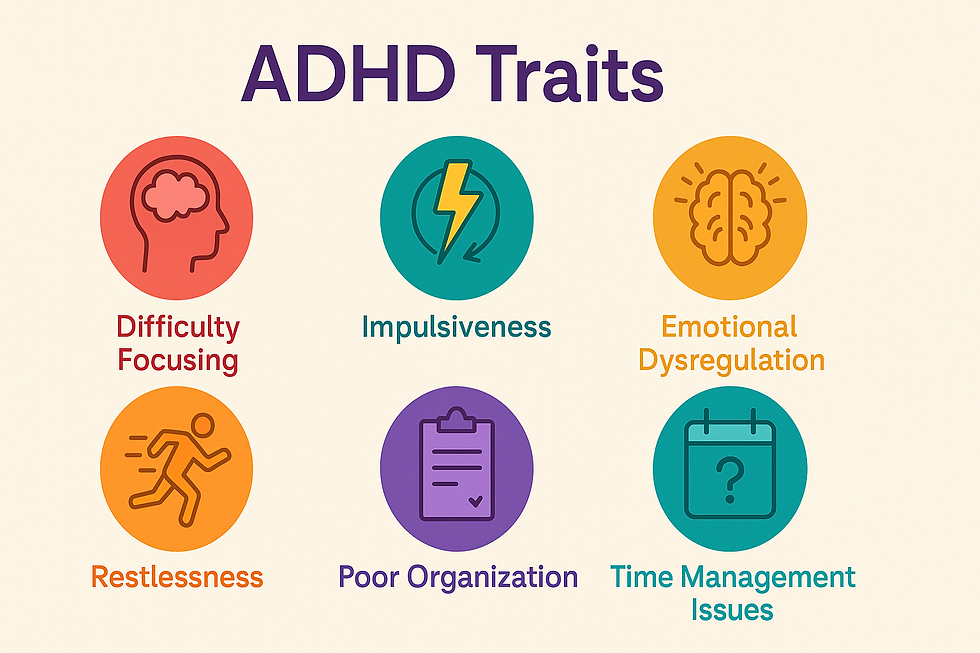What Is ADHD: Understanding a Spectrum of Experiences
- Trevor Sherwood

- 4 days ago
- 3 min read

ADHD is a lifelong neurodevelopmental difference that affects attention, energy levels, organisation and impulse control. Like autism, ADHD exists on a spectrum, and every person experiences it in their own way.
No two people with ADHD are the same. Some may feel it affects every part of daily life, while others may only notice challenges in certain situations.
ADHD is commonly understood through three presentation types. These are inattentive, hyperactive or impulsive, and combined.
People may move between these types throughout life as their environment and responsibilities change.
Common Traits of ADHD

Although experiences vary widely, many people with ADHD recognise some of these traits:
• difficulty staying focused or becoming easily distracted
• periods of intense focus when interested in something
• challenges with organisation, planning or remembering tasks
• restlessness in the body or mind
• acting quickly without thinking about consequences
• difficulty regulating energy, emotions or motivation
• feeling overwhelmed by everyday demands
• struggling with time management or arriving on time
These experiences are not personal failings. They reflect a brain that processes information differently.
Strengths Within ADHD
While ADHD can present challenges, many people also recognise strengths that come from the way their brain works.
These can include creativity, high levels of empathy, strong problem solving skills, resilience, quick thinking and the ability to focus for long periods on something meaningful.
Many people with ADHD excel in fast moving environments, innovative roles or careers that value original thinking.
Understanding these strengths is just as important as acknowledging the difficulties.
Traditional Barriers in Support
Many people with ADHD struggle to access traditional services because appointments, forms, waiting rooms and communication styles may not meet their needs.
This can create frustration and cause people to feel misunderstood.

Trevor Sherwood, Creator of LilyAnne’s Wellbeing, explains: “ADHD is often viewed through a narrow lens. People are told to fit into systems that were never designed with neurodiversity in mind. At LilyAnne’s, we remove these barriers so people can access support in a way that feels comfortable and human.”
The Importance of Neurofriendly Support
At LilyAnne’s Wellbeing, we provide neurofriendly support that is shaped around the needs of people with ADHD. Our spaces are calm and welcoming. Our team is built on lived experience and supported by qualified counsellors and psychologists who understand the realities of ADHD.
We give people time. We use clear communication. We keep things flexible. We focus on understanding, encouragement and practical support. Everything is designed so people feel safe, respected and heard.
Could It Be ADHD?
Many people experience some of the traits listed above. This does not necessarily mean they have ADHD. If these traits are lifelong, appear in different settings and have a significant impact on daily life, speaking to a doctor or health professional may be helpful. A diagnosis can offer clarity and open the door to understanding and support.
ADHD Is Not a Flaw
ADHD is not a character weakness. It is a different way of experiencing the world. With the right support, people with ADHD can thrive, build on their strengths and feel empowered in every part of their lives.
If you or someone you know would like neurofriendly support from a team that truly understands ADHD, LilyAnne’s Wellbeing is here to help.



